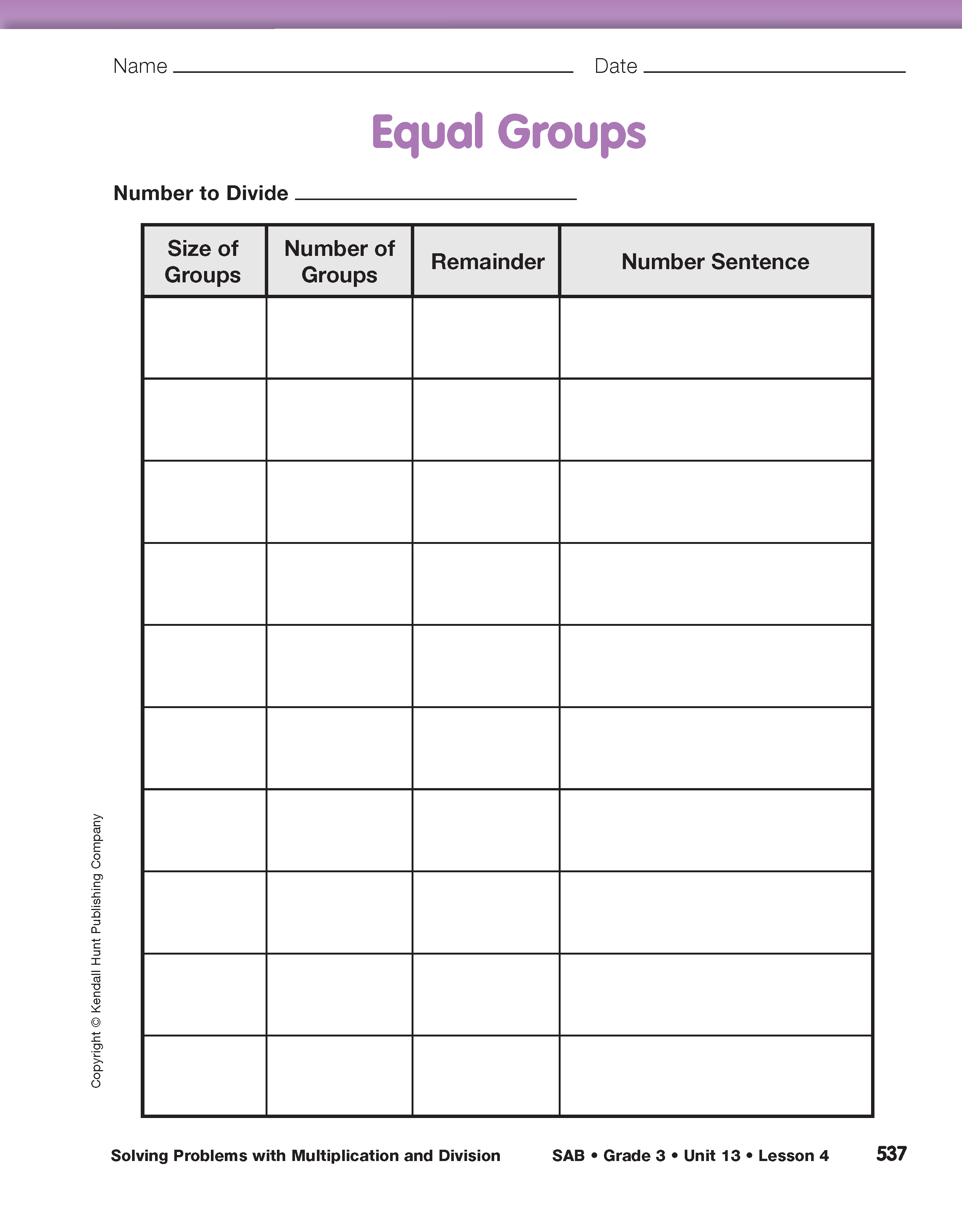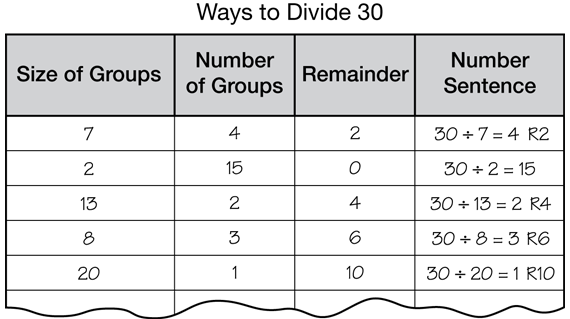Solving Problems With Multiplication and Division
Est. Class Sessions: 2Developing the Lesson
Part 1. Making Groups
Divide 30 into Equal Groups. This activity is similar to the activity in Making Teams in Lesson 4 of Unit 3. However, it involves larger numbers and emphasizes division rather than multiplication.
Begin by giving each student 50 connecting cubes or counters. Display the Ways to Divide 30 Master and ask students to count out 30 connecting cubes or counters. Explain that they will be exploring the different ways 30 can be divided into equal groups. Start by asking students to divide the 30 connecting cubes into equal groups with 7 in each group.
To help them think about the problem, students can divide the collection of cubes into groups of 7 or they can write Xs in rows to represent groups of objects. See Figure 1.
After students have solved the problem, ask:
Use a display of the Ways to Divide 30 Master to record student responses. Ask students to suggest a new group size. Ask them to find out how many groups they can make from 30 objects using the new group size. As students work, record their solutions on the display and use discussion prompts similar to those previously used to talk about their solutions. Continue in this manner investigating several different group sizes. After a discussion of several groupings of 30 objects, the display will be similar to the one in Figure 2.
Divide Other Numbers into Equal Groups. Divide the class so students are working with a partner or in a small group. Choose a number between 25 and 50 and ask each group to explore some of the different ways that they can divide the number into groups of equal size. Students can record their solutions using the table on the Equal Groups page in the Student Activity Book.
Ask student groups to share the results of their investigations.
During your discussion use various ways to phrase division questions. For example, ask:
As different groups share, encourage students to add any new ways to divide to their tables. Repeat this activity with other numbers, as time permits.
Look for Patterns. Ask students to look back at the table they completed on the Equal Groups page and the Ways to Divide 30 display and write down any patterns they see. Possible responses include:
- The remainder is always less than the size of the group.
- As you make the group size bigger, the number of groups get smaller.
- If the group size is more than half the number of objects, you will have only one group.
- If the number of objects is an odd number and the group size is an even number, there will always be a remainder.















